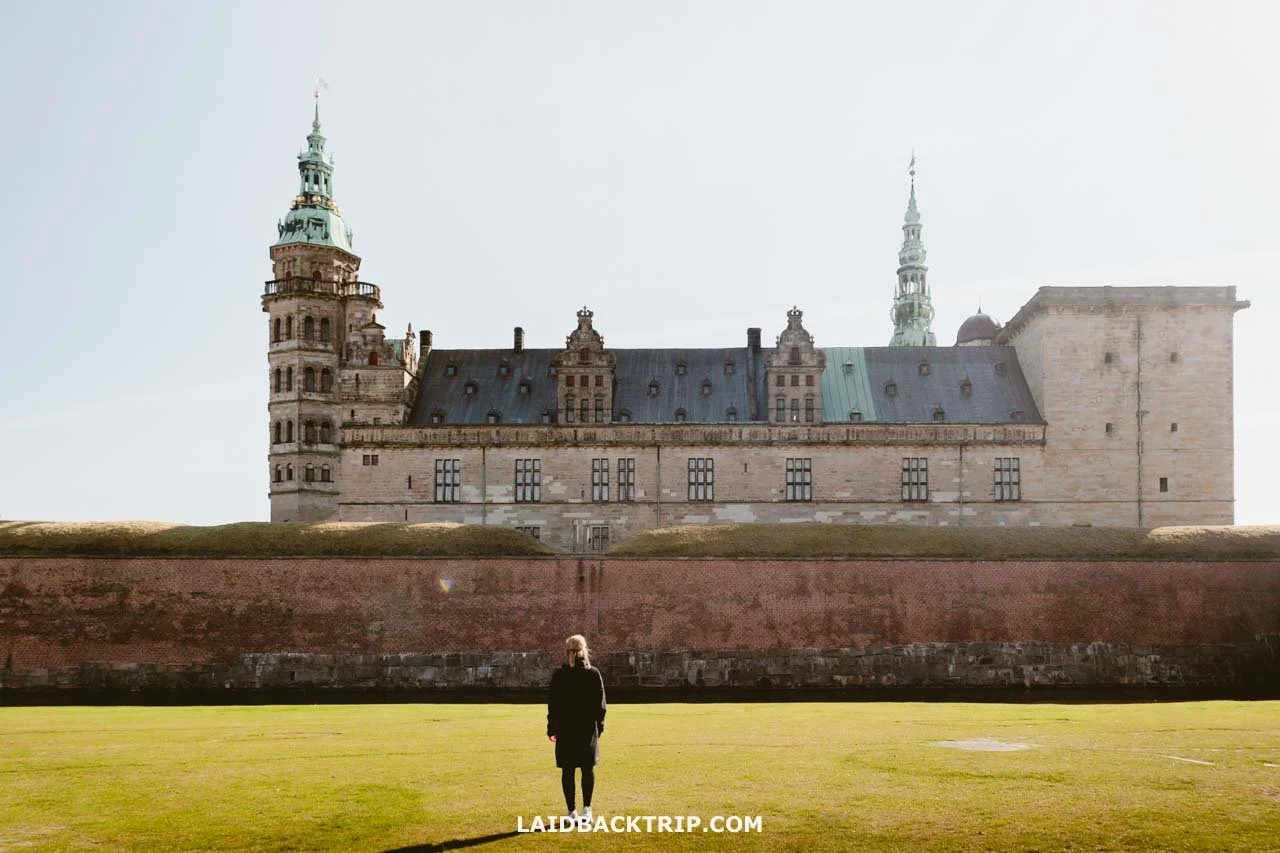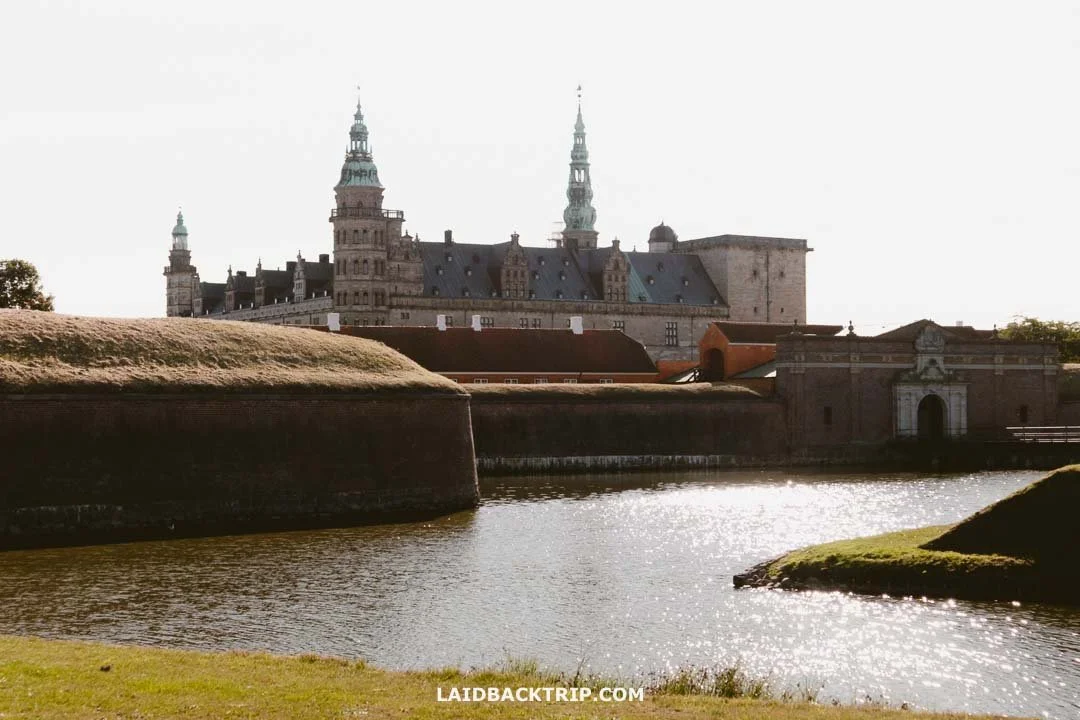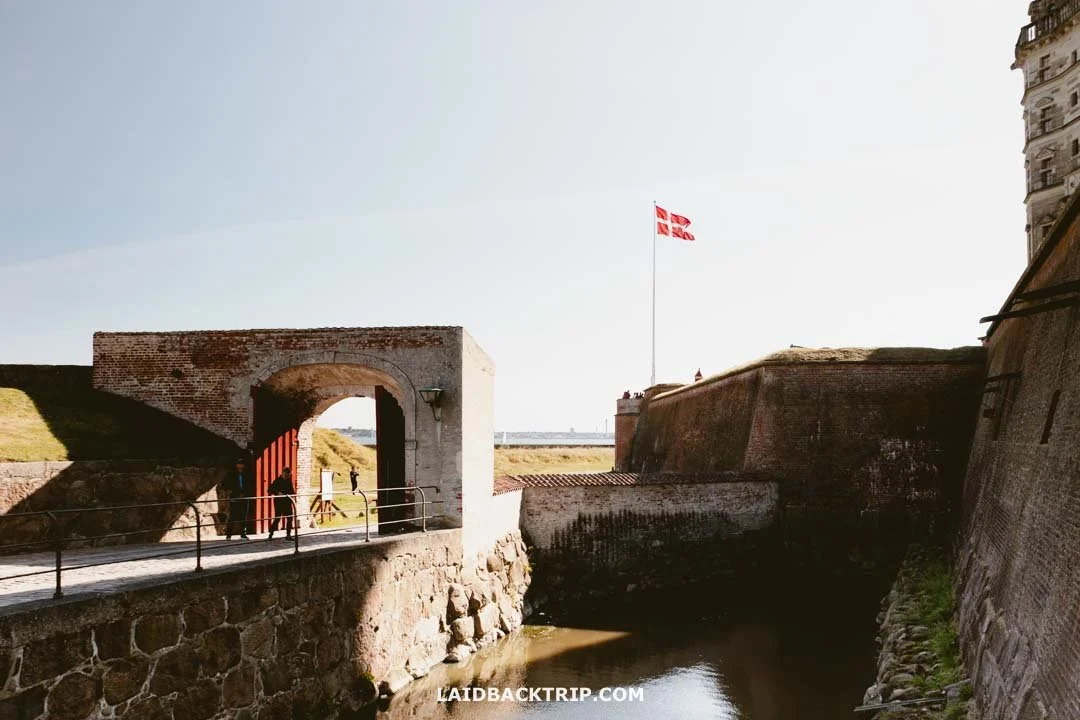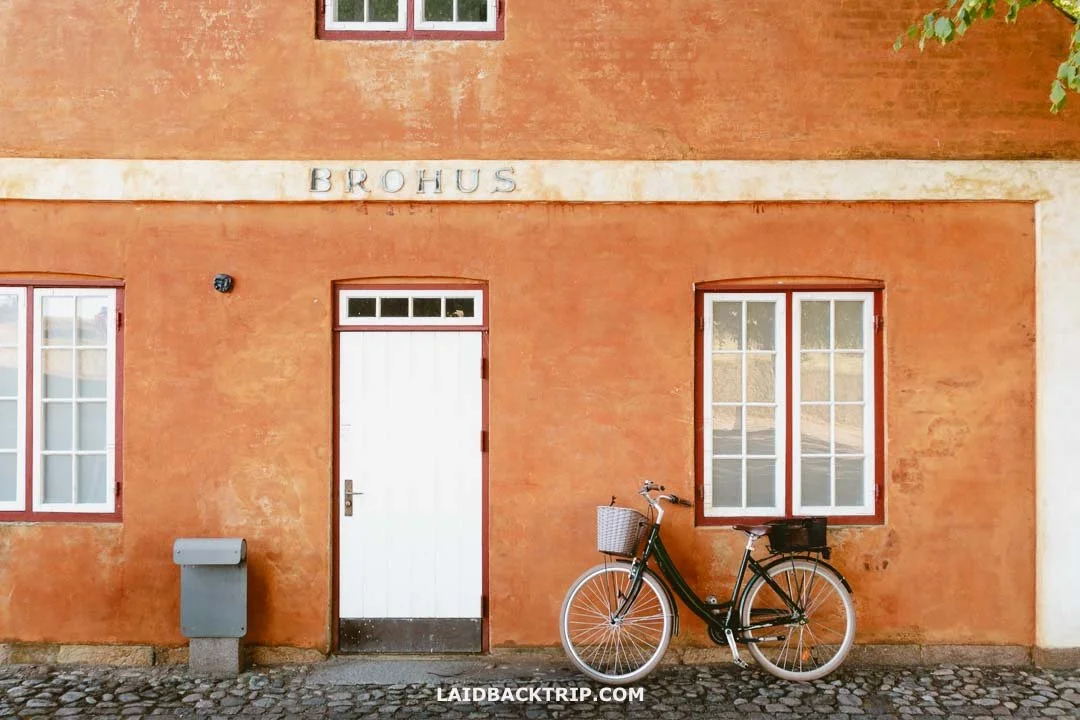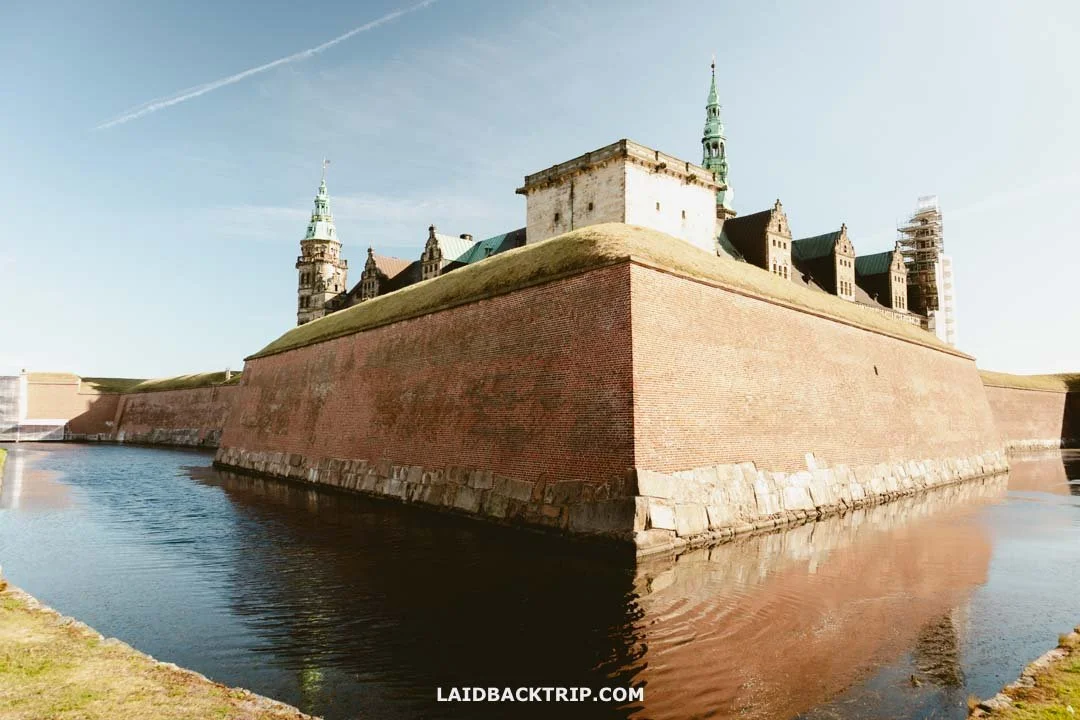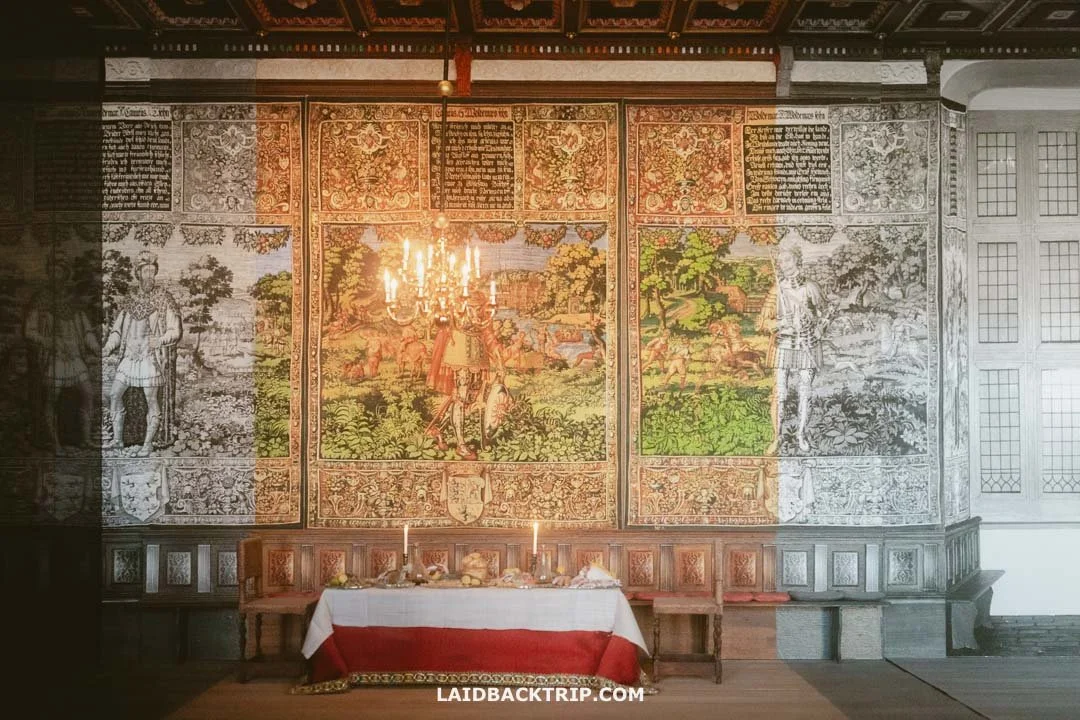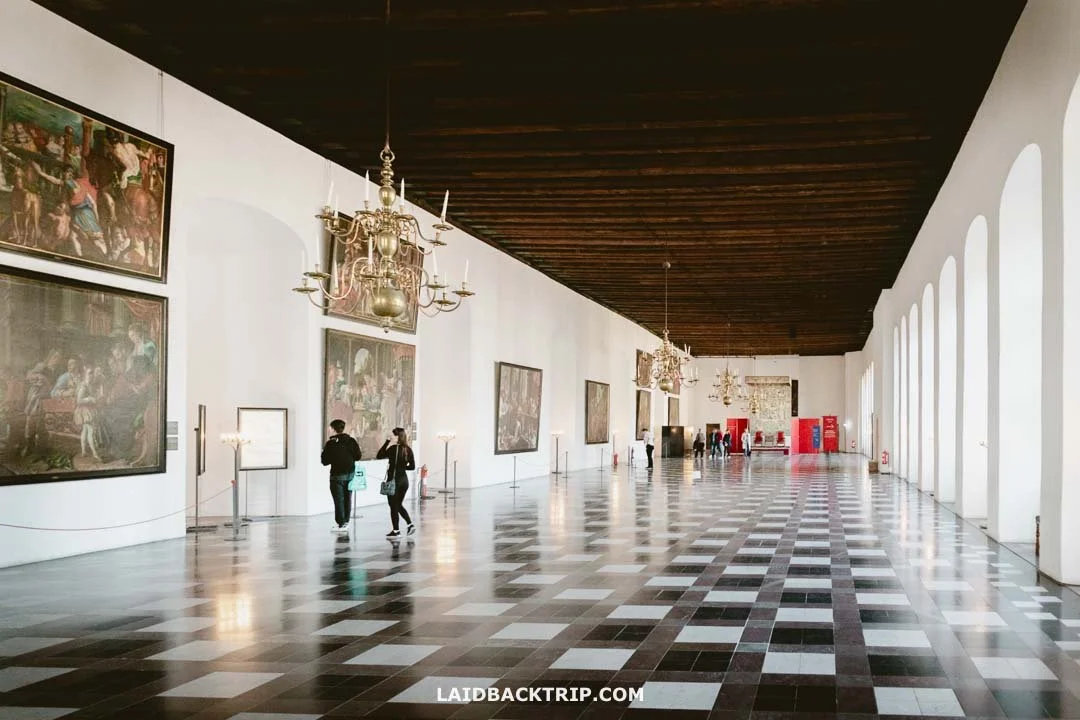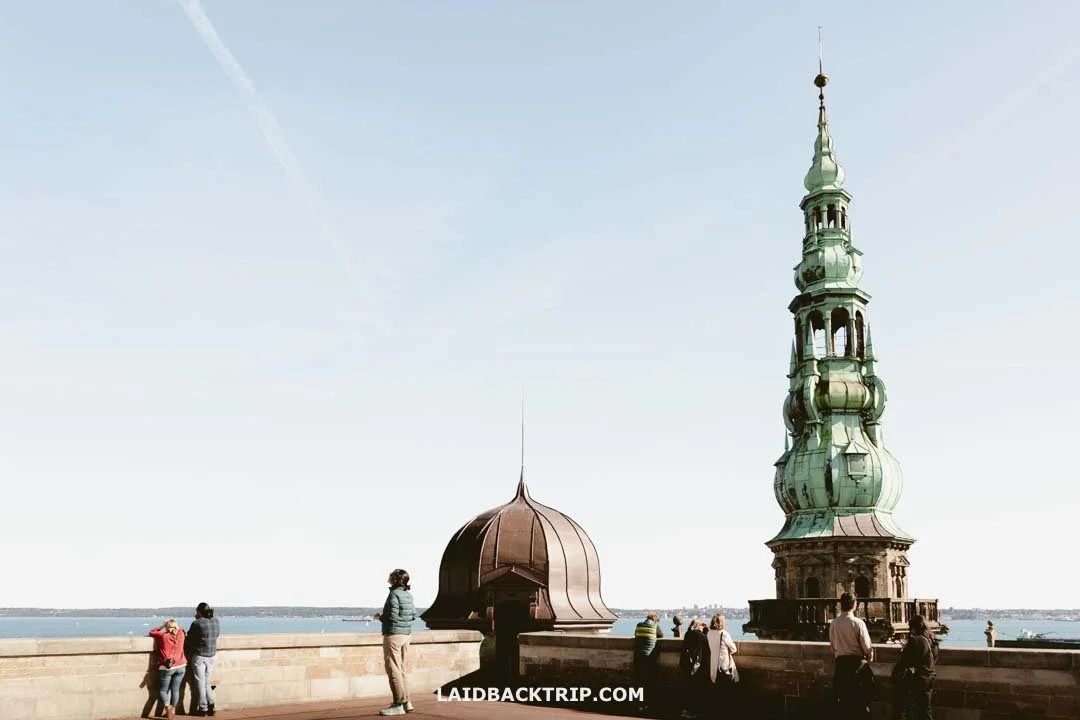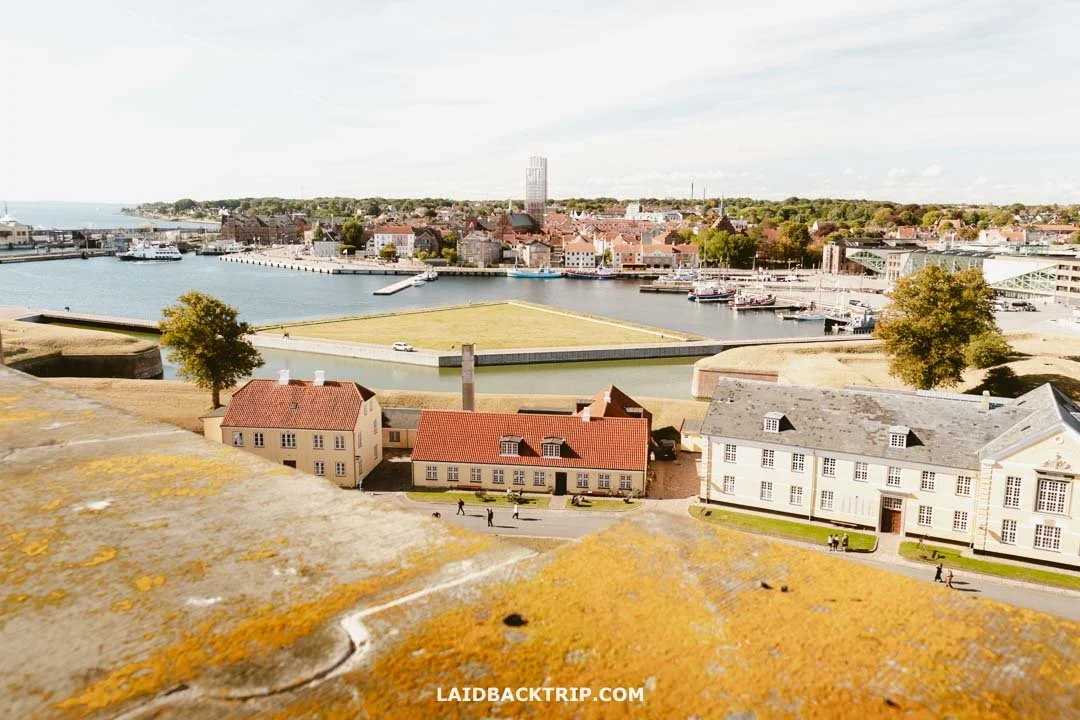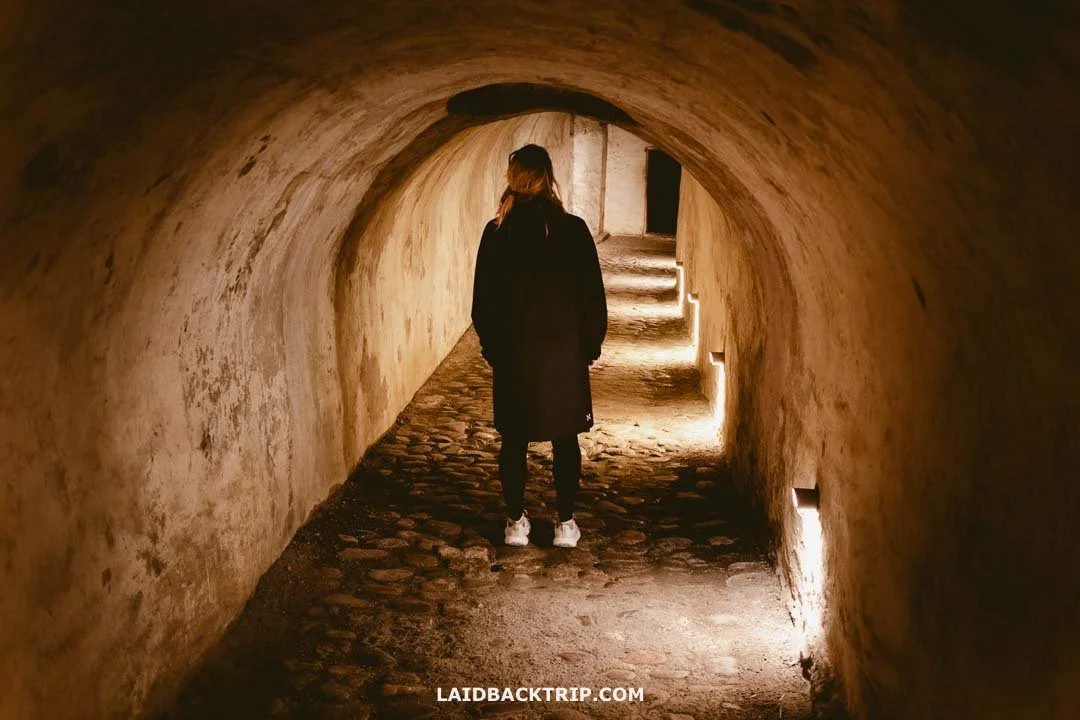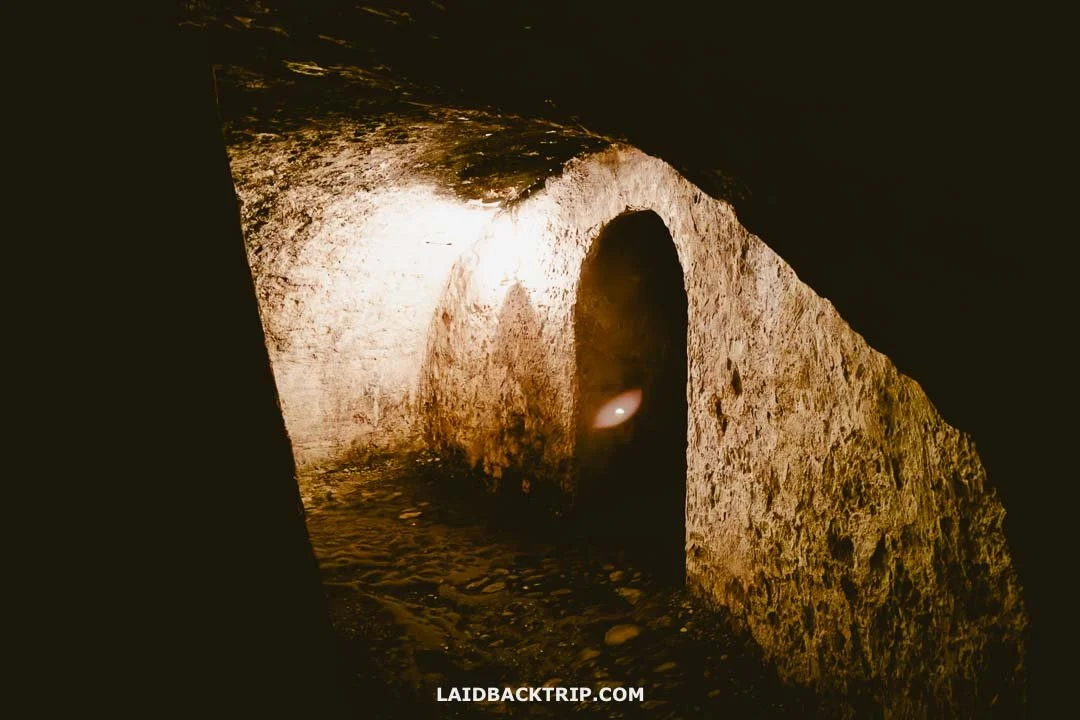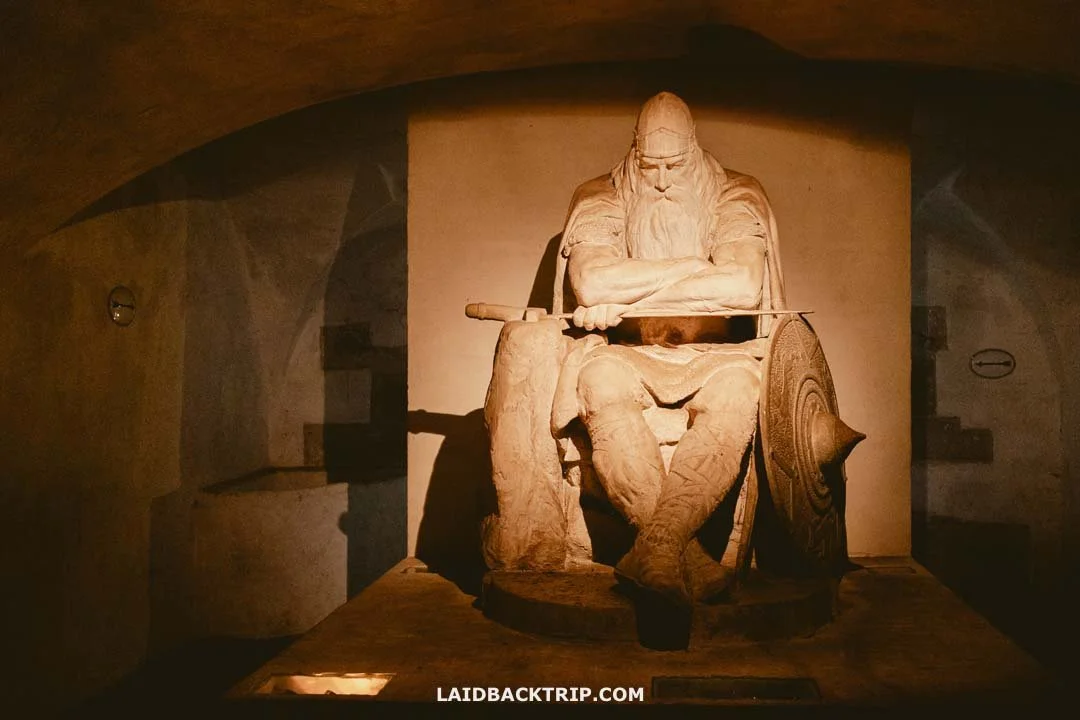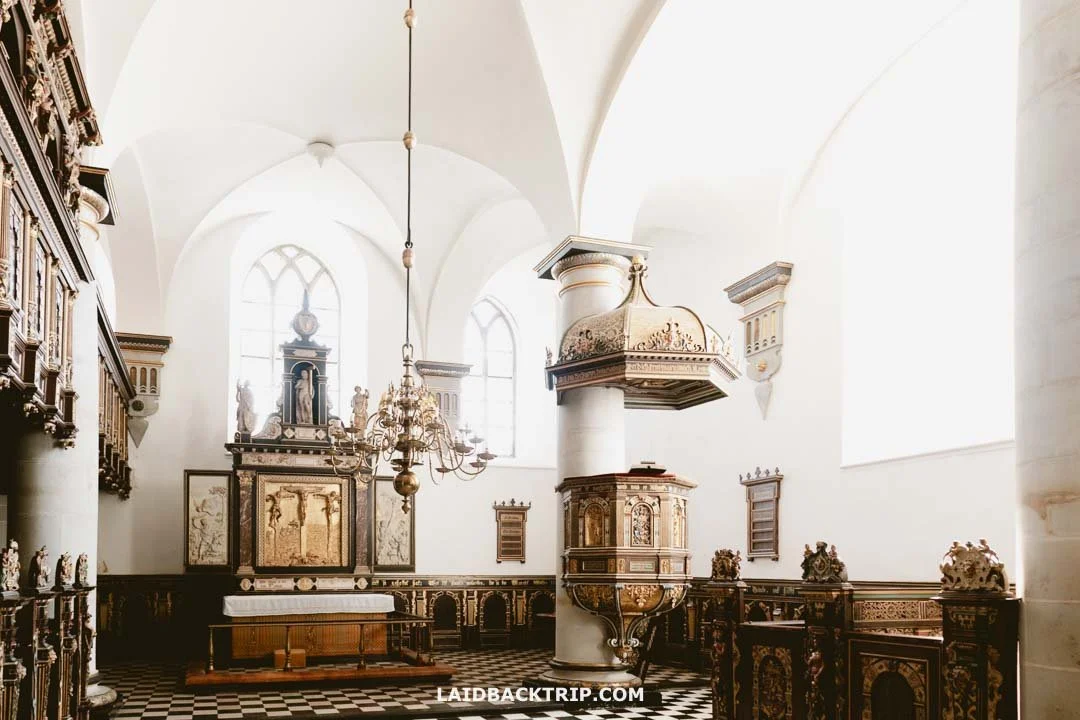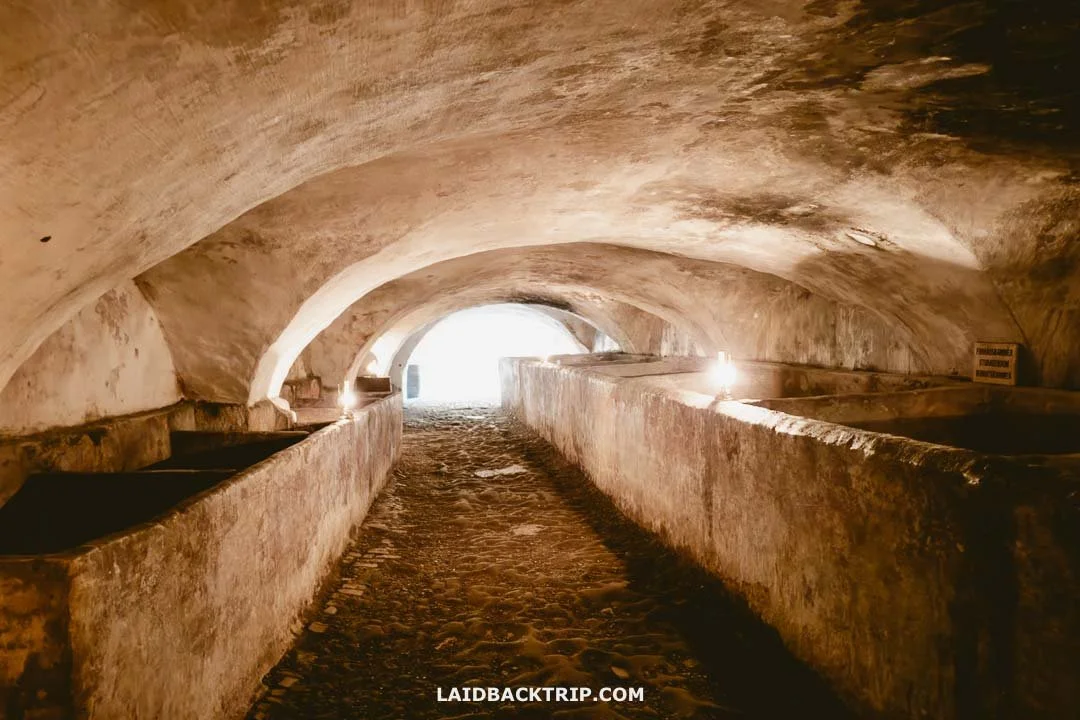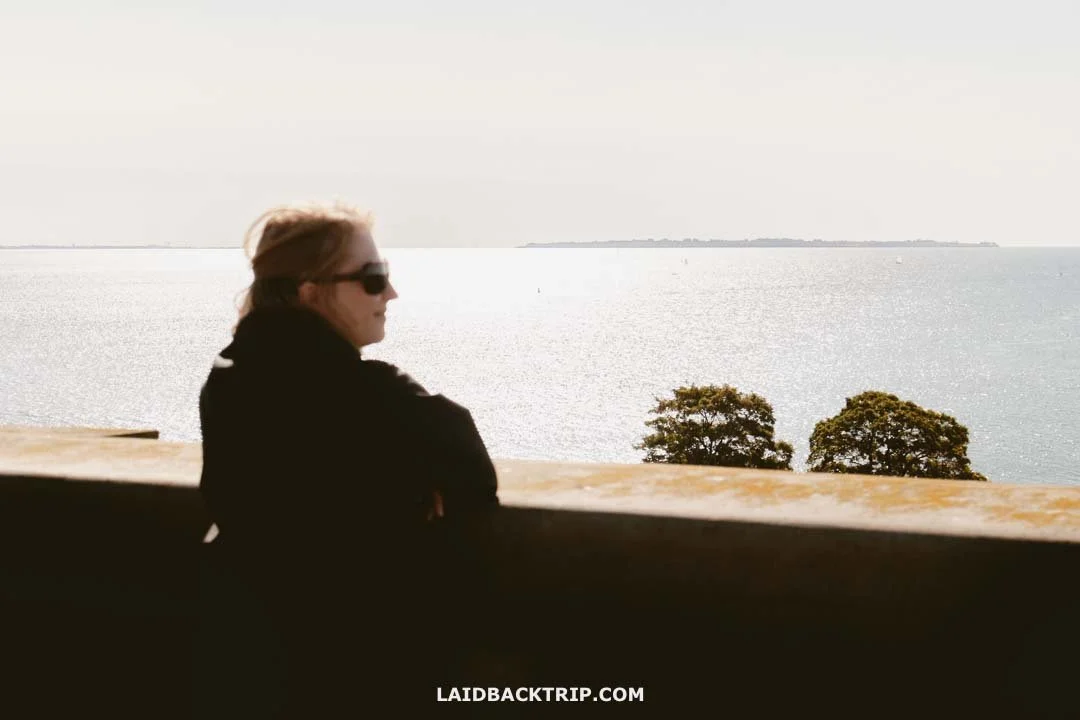Is Kronborg Castle Worth Visiting?
For anyone into strongholds, Kronborg is the spot to visit.
Kronborg Castle is easily one of Denmark's most iconic landmarks. Here's how we experienced this big stronghold and enjoyed some incredible sea views along the way!
Kronborg, built in the late 1500s by King Frederik II, is a stunning example of Renaissance design, a UNESCO World Heritage Site, home to the legend of Holger the Dane, and one of Denmark's must-see attractions. It was once a mighty fortress meant to guard the Oresund Strait, and it honestly looks amazing in pictures.
With all that in mind, it's no surprise we added it to our Denmark itinerary right away, pretty much as soon as we discovered it. But since the fortress is on Zealand and we started out in Jutland, we had to wait until the very end of our trip (it took us about two weeks to get there, just to give you an idea) before we finally made it across the whole country.
As if there weren't enough reasons to check out Kronborg, here's another. It's famously known as Hamlet's Castle, having served as the inspiration and setting for William Shakespeare's legendary tragedy. In the play, the castle is called Elsinore, the English version of Helsingør. Funny enough, Shakespeare probably never saw Kronborg in person but still featured it in his drama-packed (and royal-heavy) tale because of its fame and striking presence.
Even though we're no Shakespeare (as you can probably tell after reading a piece or two of our own writing), unlike him, we couldn't pass up the chance to stop by. On paper, this site sounded like a must-see. So here's how our visit went, along with some thoughts on whether Kronborg really lives up to the hype.
One of my favorite views of Kronborg Castle was from this spot.
Visiting Kronborg Castle
We got to Helsingør just before 8 AM, which gave us a solid two hours to check out the town before Kronborg opened. So instead of sitting around, we strolled through the charming streets, along the quiet marina, and, eventually, by the sandy strand. It was a gorgeous sunny morning, and honestly, we kind of wished we could just stay at the beach all day. But we had a lot planned, so right before 10 o'clock, we headed into the castle grounds.
So, in terms of what there is to see and do at Kronborg, we walked around the crownwork, toured the castle interior on our own, stepped inside the chapel, descended into the casemates, and climbed the tower. When you list it like that, it sounds like a typical castle visit, and we've done plenty of those before. But we're getting ahead of ourselves here, because at the time, we actually knew very little about what the whole Kronborg experience would be like.
Besides the bridges, we had to go through a few gates as well.
Exploring Kronborg's Crownwork
One of the most evident signs that Kronborg was built with a military purpose in mind shows up right at the start. Just to reach the main grounds, we had to cross two bridges over the moat, not to mention there was another one between that area and the castle itself.
Right after crossing the first bridge, we spotted a small yellow-painted house on our left called Brohus (short for bridge house), where we got our tickets. There's another place to buy them inside the castle, but this one had no line, so we went for it. Naturally, you can also book tickets online at Kronborg.
Here's where we got our tickets.
So, we ended up spending about an hour just wandering around the Kronborg grounds. Later on, I checked the map and saw that we didn't even cover a full kilometer, which goes to show how leisurely our pace really was.
Because Kronborg was once a serious stronghold, the surrounding of the castle still reflects that. This crownwork, a star-shaped outer fortification, has been a key part of the castle's defense since the 17th century (this reminded us a little of Nyborg Slot, which we saw earlier, and also of Terezin Fortress, which is in our home country). There are ramparts, moats, green spaces, and bridges, like the ones we mentioned before. These days, it's all part of the tourist experience, but honestly, it still looks awesome.
This is the second bridge we crossed on our way to the castle.
Obviously, this combination looked very different from the classic castle grounds with immaculately landscaped French-style gardens we saw a few hours later at Frederiksborg. Both places couldn't be different, and if you have time just for one, it comes down to whether you prefer charm and elegance over purpose and practicality, at least when it comes to castles.
At certain angles, Kronborg appeared totally impenetrable.
We walked around very slowly, soaking in the views. The ferries passing between Helsingør and Helsingborg, smaller boats cruising through Kattegat, the sunlit morning shores, the deep blue water, the Danish flag flapping on a tall pole, and, of course, Kronborg itself. All of it was captivating, and we just couldn't get enough.
Later that day, we visited Frederiksborg (and in the days before, Rosenborg Castle), and Kronborg couldn't have looked more different. Not just from the outside, but also inside, where we headed next. Anyway, with tickets in hand, we finally stepped into the castle courtyard.
The courtyard showed that Renaissance sense of confidence with its symmetry and proportion, yet somehow looked almost ordinary. The most curious thing that caught our attention, apart from the scaffolding covering some renovations, was the small water fountain in the middle.
The main courtyard is the centerpiece of Kronborg Castle.
Apparently, there was a large fountain here in the past during Frederick II's reign, but it was later replaced by this smaller one. Interestingly, it's drinking water, so you can refill your bottle there (we didn't test it ourselves). After snapping a few photos, we made our way to the entrance for the castle tours.
Touring the Kronborg Castle
Once inside, we explored Kronborg on our own. We picked the basic self-guided tour because the only guided tour in September, All About Kronborg, didn't begin until 2 PM. The other tours, like Hamlet's Castle, Kronborg Queens, and Secrets of Kronborg, were only available from July 1 to August 31, which is the summer holiday period here.
The guided tours cost extra, except for the Kronborg in 15 Minutes tour, which is free, but also wasn't available outside the summer season. They did offer an audio guide through a third-party app, but we just relied on the information panels in each room, and that worked out fine.
One of the first rooms we saw inside Kronborg was super simple.
As we moved through Kronborg's rooms and corridors, the comparisons with Frederiksborg kept coming. In most rooms, we couldn't help but notice how simple and basic they were. Kronborg really was a military stronghold, and it showed. We passed through modest spaces with white walls, wooden floors, and basic furniture. Occasionally, there were tapestries, paintings, and even frescoes, reminding us this was still a royal castle, but that was about it.
The rooms after that were also fairly basic.
It wasn't just a first impression. That's really how Kronborg looks. Through the information panels, which were in every room and also in English, we learned why. The first fortress on this site was built by Eric of Pomerania in the 15th century. He named it Krogen and used it to control the waters of the Oresund Strait and the entrance to the Baltic Sea during the Kalmar Union.
The castle, which looks nearly identical to how it does today, was built by Frederick II between 1574 and 1585. The reason I say 'nearly' is because a major fire in 1629 destroyed most of the interiors (almost miraculously, the chapel was left intact). Christian IV oversaw the rebuilding afterward. Then in 1658, Swedish King Charles X Gustav plundered the castle, though it was returned to Denmark by 1660.
From a short look at Kronborg's history, it's pretty clear the castle's main purpose was to control maritime traffic, collect the Sound Dues toll, and generate revenue for the crown. Luxury wasn't the goal, since that was reserved for other royal sites. From 1785 to 1923, it was used solely as a military barracks and prison.
Frederick II's commissioned tapestries were absolutely stunning.
Even the Royal apartments, like the King's Chamber and the Queen's Chamber, were not so lavish as they would be in other castles (just the regular ones, not Versailles or Linderhof Palace). The main highlight of the whole tour was easily the Great Hall (Ballroom). With over 60 meters long, it's one of the largest Renaissance halls in Northern Europe. It was pretty spectacular, but again, far from lavish. One of the coolest features we noticed was the massive walls in the Great Hall, which were more than two meters thick.
Frederick II used the Great Hall to host lavish banquets and royal ceremonies.
Besides that, there wasn't much to see inside Kronborg, which is clear since we spent less than 30 minutes indoors. But that's not really what Kronborg is all about. It's like when we visited Egeskov Castle and realized it's more about the museums and gardens than the castle itself.
Climbing the Cannon Tower
One of the best parts of the Kronborg tour was that we could climb the tower, just like we did at Koldinghus a few days before. So, after exploring all the rooms open to the public, we made our way to the tower entrance. There, we were greeted by 145 steps and a narrow spiral staircase leading to the very top of the Cannon Tower. It wasn't hard at all, and the effort was definitely worth it.
The viewing platform at Cannon Tower was quite spacious.
It was pretty windy up on the viewing platform, but honestly, that was the case on Helsingør's beach, around the crownwork, and, to be fair, just about everywhere we went in Denmark, so it wasn't anything new. Aside from that, though, we couldn't have asked for better weather.
This is Kronborg's entrance as we saw it from the tower.
At Koldinghus, we were caught in a total downpour, but here, it was sunny and clear, giving us amazing views. We could see Helsingør, the Oresund Strait, Ven Island, and even Helsingborg, which is the nearest part of Sweden to Denmark. And of course, the views over Kronborg's crownwork and fortifications were just as impressive.
The views of Helsingør from the top of Cannon Tower were pretty awesome.
Kronborg's Casemates
After finishing our tour of the main castle and climbing the tower, we made our way underground to check out the casemates, which were another part of Kronborg's defensive design. Built in the 1570s, these underground bunkers were used during wartime, including the Swedish siege we already mentioned. They could house up to 350 soldiers and were equipped for a six-week siege, complete with food, cannons, a forge, and even a stable.
Exploring the casemates didn't really require any extra effort.
We had already seen casemates at Aalborg Slot, but honestly, there wasn't much to see there, and Kronborg does a much better job in that regard. The corridors were damp and dimly lit, but there was enough light and signage for us to easily follow the suggested route. We used our phone flashlight only once, just to peek down what seemed like a pitch-black corridor, only to find it ended a few meters in.
This corridor was one of the darker ones.
Another reason not to skip Kronborg's casemates is that beneath the castle rests the mighty warrior Holger the Dane. According to Danish legend, he'll awaken when the country faces its darkest hour. When we visited, Denmark seemed to be doing just fine, and Holger was sound asleep, or at least the statue of him was. Oh, and Holger isn't the only one down there. If you visit the castle in winter, the underground becomes home to bats!
This is the statue of the resting Holger the Dane.
Visiting the Kronborg Castle Chapel
Back in the courtyard, there was one last spot we hadn't seen yet, the Kronborg Castle Chapel. That's where we went next. There were surprisingly few people at the castle, and once inside the chapel, we found ourselves completely alone.
Kronborg Chapel is accessed from the castle's courtyard.
It was first opened in 1582 by King Frederick II. The chapel survived the Great Fire, was later used for military purposes, and was restored for religious use in the 1840s. The interior is modest too, matching the rest of the castle's style, featuring white walls, black and white checkered floors, and a richly decorated oak pulpit, but no frescoes. The chapel is relatively small, and we spent just a few minutes there.
Kronborg's Entry Fee
Admission to Kronborg Castle is 145 DKK for adults, which is about the same price we paid at other Danish castles. It was definitely more expensive than we'd have liked, but honestly, that was the case everywhere we went, not just castles, but also museums in national parks or Viking sites. Keep in mind that Kronborg is included in the Copenhagen Card, which gives you access to many must-see spots in the capital and nearby areas.
Even with a regular Kronborg ticket, we could explore the casemates, chapel, and tower.
Kronborg's Opening Hours
Kronborg Castle is open from 10 AM to 6 PM during summer months (June to August), closes at 5 PM in spring and summer, and 4 PM in winter (February is also closed on Mondays). We happened to visit Kronborg Castle in September, at the turn of summer and fall, and the weather was as good as it can be this time of the year.
How Long Should You Spend at Kronborg Castle?
We spent roughly an hour walking around the castle, 30 minutes exploring the interiors, under 10 minutes in the chapel, about 20 minutes at the tower, and at least 20 more in the casemates. In total, it took us around two and a half hours to see what Kronborg Castle has to offer, though it was a beautiful day and we spent quite a bit of time outside. So, two to three hours should be plenty for most visitors.
If you're visiting Kronborg on a day trip from Copenhagen, remember that the nearby town of Helsingør is quite charming, and you could easily spend a few extra hours there, making it a nice half-day trip.
Since the weather was great, walking around Kronborg was really enjoyable.
Travel Insurance
We never leave home without travel insurance that was designed to cover our expenses if something goes wrong during the trip. Travel insurance protects against theft, flight delays, injury, illness, cancellations, and much more. Travel smarter and safer!
World Nomads provides travel insurance for travelers to cover their trip essentials, including sports and adventure activities.
SafetyWing is affordable travel insurance for backpackers, long-term travelers, and digital nomads.
Is Kronborg Castle Worth Visiting?
Of all the castles we saw in Denmark, Kronborg was the one I found most interesting. Its coastal setting, strong defensive features, and cool history make it, at least to me, well worth a visit. Lucie liked it a lot as well, but she did miss the traditional castle feel with richly decorated interiors. I mention this because if you're coming to Kronborg just for fancy rooms, you could end up a little let down.
We had a beautiful morning at Kronborg and felt glad we made the trip.
Putting that aside, it was pretty neat to discover that Hamlet's castle is real, even though Kronborg doesn't really hype it up and instead highlights its own history and significant events. Considering its role in Danish history, I think that's the smarter way to go about it.
After we finished, we headed outside and wandered around Helsingør a bit more. Once back at our car, we drove to the nearby Louisiana Museum of Modern Art, one of the last stops on our entire road trip.
Getting to Kronborg Castle
Our day began early in Copenhagen because we wanted to get to Kronborg Castle right when it opened. Since we stayed a bit outside the city center, we took the E47 to bypass the city, which brought us to Helsingør. The 65-kilometer drive took us under 50 minutes.
If you start in the city center and head straight there, you can shave off about 20 kilometers, but it won't save much time. Roskilde is about an hour from Kronborg Castle, and Odense is around two and a half hours away. You can compare rental car prices in Denmark here.
You can also catch a ferry to Helsingør from Helsingborg.
Public Transport: To get to Kronborg Castle from Copenhagen by public transport, your best option is to take the Coastal Railway (DSB) to Elsinore Station. Trains run about every 20 minutes, and the station in Helsingør is roughly a 10-minute walk from the castle. By the way, you can also catch a ferry from Helsingborg, which is just across the Øresund Strait in Sweden.
Kronborg Tours: Obviously, Kronborg is a popular trip from Copenhagen, and you'll find lots of tours available. This highly rated one includes Kronborg along with other must-see sites in the area, such as Frederiksborg and Roskilde Cathedral.
Some visitors, unlike us, explored Kronborg with a guide.
Parking at Kronborg Castle
As we were driving to Kronborg Castle, I first had to figure out where we'd park. The most obvious choice was Parkering Kronborg Slot (Parkering Nordhavnsvej run by APCOA) located right next to the castle, but it was paid, and I wondered if there was a free lot. A bit further along was parking for the marina, but I couldn't find out the rules and didn't want to risk a fine, so I looked elsewhere.
The only free parking in Helsingør I could find that was clearly marked as free was 24-hour Parking Helsingør (that's how it's called on Google Maps), about 1.5 kilometers from Kronborg Castle. It was a bit of a walk, but since we planned to stroll around Helsingør anyway, the 15-minute walk to the castle wasn't a problem. We got there early, and the lot was already fairly full, so it looks like a popular spot.
Accommodation Near Kronborg
Helsingør is quite compact, and there are several nice hotels near Kronborg Castle. You can stay in the town center at Hotel Skandia or Hotel Hamlet, or by the beach at the popular Marienlyst Strandhotel or budget-friendly Danhostel Helsingør. Or you can stay in Copenhagen like we did (we stayed at AC Hotel Bella Sky).
Travel Resources
Here you can find links to all the travel resources we use and which you might find helpful when planning your next holiday.
Accommodation: When looking for accommodation, we usually search hotels via Booking.com or Hostelworld.
Tours: Although we love to travel independently, some places are better to visit with a guided tour.
We prefer GetYourGuide for its easy-to-use interface and solid reputation. Another great alternative is Viator.
Rental Cars: When going on a road trip, we always use Rentalcars.com, a reliable site for booking a rental car in advance.
Flight Tickets: When looking for flight tickets, you can search Skyscanner to find the best price.
Travel Insurance: World Nomads and SafetyWing cover against risks of travel.
